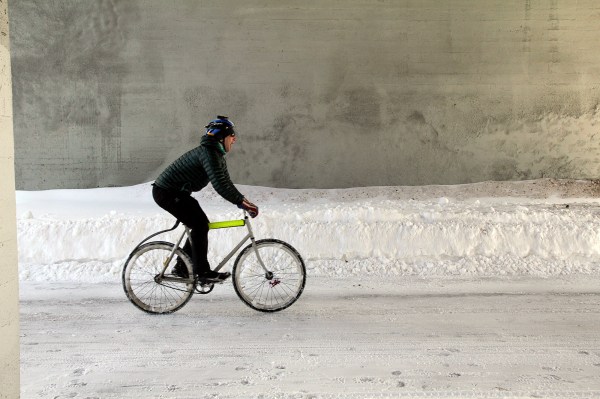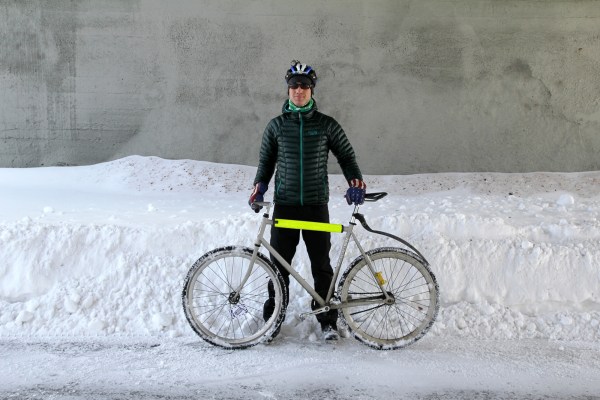Previously I wrote on bike and gear recommendations for winter commuting. This column focuses on techniques I employ to pedal through the Minnesota winter, no matter how wild the weather gets.
In Minneapolis, my hometown, snow and ice coat city streets for months straight. But the city has an active cycling scene year-round, including thousands of riders who embrace the winter and simply adjust their style (and often their bike, too) when the snow falls.
Be careful out there on the icy streets. Before heading out get geared up with appropriate clothing, outerwear and lights, as well as the correct type of bike. After the gear is in place, follow these tips to stay safer and have more fun on the winter road.
Downshift & Slow Down
Just like you do while driving a car on snow, you need to take it easier on a bike when rolling over the white stuff. It takes longer to stop, and turns can be treacherous if your rear tire fishtails. I give myself an extra 10 to 20 minutes to commute during the winter months.

Adjust Riding Style
In addition to slowing down, I adjust my riding mentality and technique in the winter. Most days my commute feels more like a mountain biking session, including dodging obstacles like icy ruts, rolling off curbs or through snowdrifts, jumping pot holes and puddles, and just staying loose as the terrain shifts in front of my wheels.
Take Road Less Traveled
I modify my routes through the city in winter, staying off main roads where traffic is faster. But side streets in Minneapolis are often icy and slow. The trick is to find mid-level traffic routes that get driven enough to be clear, but are not clogged with drivers going 40 mph.
Pedestrian Paths
In Minneapolis we’re fortunate to have one of the country’s best biking infrastructures. This includes on-street bike lanes as well as dedicated paths for riders where cars cannot go. In addition, the ped paths are plowed by the city, often before many secondary city streets. On normal days I ride streets through the city—it’s fastest. But for a safer (though more meandering) route the no-cars-allowed bike paths are key on icy, snowy days.
Glasses Or Goggles
Most days I do not employ eyewear, even down below 10 degrees. But if there’s strong snowfall coming down you need a covering over the eyes. Ski goggles are popular with many riders in my city. I prefer less coverage and wear a wrap-around style pair of sunglasses. Note: Don’t tuck the arms of your glasses under your hat: the slight gap creates an opening where wind funnels in and chills the head.
Keep Eyes On Cars
Snow-covered windshields and other visual obstacles make visibility tougher for drivers in cold weather. This in turn makes bikers far less noticeable, not to mention the fact that many people are not looking for cyclists this time of year.

As I noted in a column last week, use front and rear lights and employ reflective materials where you can. But also adjust your riding style in traffic: Try to be even more aware of the cars around you waiting at intersections or idling at a curb ready to go. Make yourself seen, use extra caution around cars, and be careful out there.
Photo credit: ©GearJunkie.com
